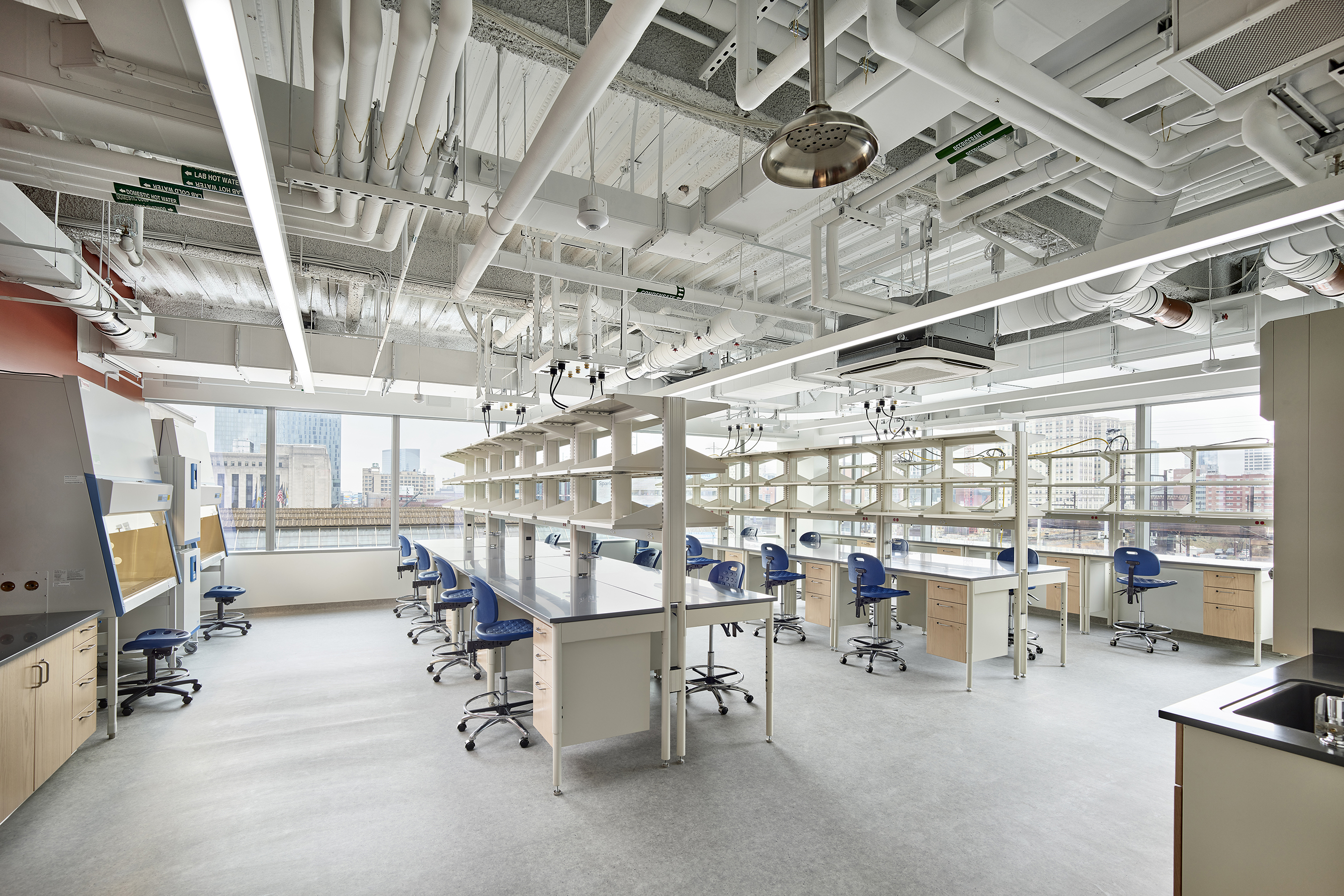A weakened office market combined with ongoing, strong demand for life sciences space in Maryland and the Mid-Atlantic has prompted some property owners – and their project teams – to refine processes for creating laboratories within existing office buildings.
Bala Consulting Engineers has heard from multiple clients who are looking to do office-to-lab conversions. Proposed projects have included phased – and sometimes fast-paced – repurposing of a single urban building, masterplans to covert a cluster of suburban buildings and renovations to enable buildings to serve lab or office needs as market demands shift.
Demand for life sciences space is prompted not just owners to pursue conversions, said Scott Davis, Vice President and Director of Mechanical Engineering at Bala Consulting Engineers.
“We are working with developers who are looking to purchase buildings,” he said. “They see an opportunity in unused office space that someone else owns and they bring us in to do facilities assessments and help plan a conversion to life sciences space.”
The best prospects for office-to-lab conversions are often suburban properties dating from the 1970s onwards and preferably built with steel frames, said Steve Anastasio, Director of Structural Engineering with Bala. “Steel is a lot more malleable than concrete, instead of post-tensioned structures, which are not as easy for contractors to modify. It makes the buildings less vulnerable to vibration issues which is preferable for labs. That is half the battle in converting an office to lab space: making sure the floors are robust enough.”
Minimum floor-to-ceiling height of 11.5 feet is needed to accommodate the operations and infrastructure of a laboratory, Davis said.
Increasingly, owners are also considering uncommon designs to both accommodate life sciences infrastructure and create highly attractive lease space. On several projects, Bala has designed and installed multiple risers throughout a building’s interior to connect mechanical, electrical, data and other infrastructure to adjacent labs on each floor.
“The tradeoff is losing some rentable floor space to these numerous vertical shafts,” Davis said. “But if you work closely with the architect, you can sometimes steal a little bit of a closet or a nook or cranny, you can take advantage of void spaces that architects often include in a layout. It’s challenging and we do a lot of 3D modeling to use every beam pocket to make things fit. But you can minimize the amount of rentable space you are stealing and it also spares you from using exterior space and blocking windows with risers. We keep hearing from companies that windows are a selling point for lab space. They want to offer great views to attract tenants.”
Most conversions also require a plan to complete phased, occupied renovations.
“The trick is to get the first part of the building fit out and occupied so you can bring in cash flow,” Davis said. “You have to strategize on how to get the first tenants up and running then continue the fitout throughout the building without disrupting that first tenant as they do sensitive lab work.”
For a current conversion project in Shady Grove, for example, the project team determined that the most effective approach would be to complete renovations from the top of the building down, Anastasio said.
